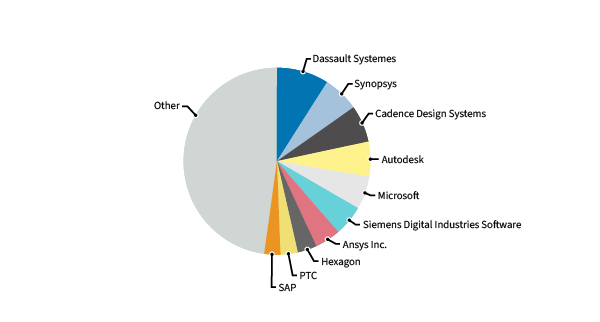As of 2024, the Aerospace & Defense industry (A&D) invests approximately $7.7 billion a year in specialized software, and market analysts project this figure to reach $9.7 billion by 2028.
Despite this scale, 48 % of license spend is misallocated annually. Conventional software cost estimation methods—originally designed for static, perpetual, on-premise licenses—struggle to account for today’s complex realities: feature-based licensing models, rapidly shifting program timelines, and globally distributed development teams working in dynamic, collaborative environments.
DEMO: Stop Guessing Software Costs, See Accurate Estimation!
Why Traditional Software Cost Estimation Is Falling Short
Software cost estimation in the aerospace and defense industry is uniquely complex. Programs span multiple years, involve numerous stakeholders, and depend on a wide array of specialized engineering tools—many of which are expensive, licensed at the feature level, and used across global teams.
Five root causes erode forecast accuracy:
- Lack of usage transparency – No granular data on who used what, when, and for how long.
- Static software budget forecasting models – Annual true‑ups ignore quarter‑to‑quarter demand swings.
- Siloed project data – Procurement, finance, and engineering maintain disconnected records.
- Vendor complexity – Bundles, add‑ons, and token‑based hybrids confuse total‑cost models.
- Security and compliance blind spots – ITAR/DFARS restrictions add hidden administrative overhead.
The impact of inaccurate software cost estimation is significant—overestimating leads to inflated budgets and wasted resources, while underestimating can cause project delays and disrupt critical timelines.

Software Cost Estimation as a Strategic Discipline
Digital Engineering, Model‑Based Systems Engineering (MBSE), and Modular Open Systems Architecture (MOSA) are rewriting program lifecycles—and DoD 5000.87 demands demonstrable cost realism. To stay ahead, organizations should replace reactive “buy more when we run out” behaviors with a quarterly rolling‑forecast model fed by weekly software usage analytics.
Open iT: Enabling Accurate Software Cost Estimation
Open iT provides the visibility, analytics, and forecasting capabilities needed to transform cost estimation from guesswork into a data-driven discipline. Here’s how:
| Capability | What it delivers |
| Granular Usage Tracking | Feature‑level, time‑stamped telemetry—capturing > 1 billion checkout events per year across 500 + engineering titles. |
| Dynamic Demand Forecasting | Machine‑learning (ARIMA/Prophet) models that translate usage patterns into 12‑ to 18‑month demand curves—ideal for predictive software demand modeling. |
| Optimization Insights | Actionable recommendations—e.g., reclaiming 1,200 dormant CATIA seats in Q1 2025 at a top A&D integrator, showcasing advanced software license optimization. |
| Compliance & Audit Readiness | Automated ISO 19770‑3 tagging, FIPS‑140‑2 encryption, and instant vendor‑true‑up reporting. |
| Consumption‑Based Allocation | Automated ISO 19770‑3 tagging, FIPS‑140‑2 encryption, and instant vendor‑true‑up reporting enable better software procurement strategy. |
Avio Aero’s Path to Precision Forecasting
By coupling Open iT telemetry with agile procurement reviews, Avio Aero trimmed simulation license variance‑to‑budget from ±20 % to ±5 % in under four quarters.
Explore the Avio Aero case study.
Modern Estimation for Today’s A&D Programs
In modern aerospace and defense programs, software is no longer a secondary concern—it is often the core enabler of mission performance. As such, the ability to estimate software costs accurately and adapt those estimates as programs evolve is now a strategic necessity.
Open iT empowers A&D leaders to transition from outdated, reactive cost models to strategic estimation practices grounded in real data. This not only enhances software budget forecasting and software procurement strategy, but also improves agility, auditability, and lifecycle management for critical defense software assets.
For organizations asking how to improve software cost estimation in aerospace and defense programs, Open iT offers a proven path forward.
The Bottom Line
A&D organizations cannot afford to underestimate the role of software cost estimation. With billions at stake and missions on the line, the margin for error is razor thin.
Teams that embed data‑driven estimating practices reduce budget variance from ±20 % to ±5 %, accelerate milestone readiness, and free scarce dollars for innovation.
In the modern aerospace and defense industry, better software cost estimation isn’t optional—it’s operational. And with Open iT, it’s achievable. Contact us now or schedule book a 30-minute demo.
Stop Guessing Software Costs — See Accurate Estimation in Action.






